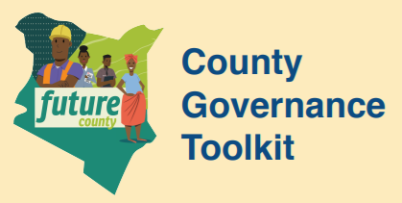Exchequer and Cash/Treasury Management is an “omnibus” term that reflects one of three core, non-payroll budget execution processes. It happens continuously throughout the year, based on cash flow plans and exchequer requests and issues, and is best understood as an integrated cycle, rather than discrete processes. There are four elements to this cycle – management of budget authority (exchequer requests and issues), payments management, receipts management and cash management. Every department, working under the leadership of Treasury in County Finance and Economic Planning, contributes to overall exchequer and cash/treasury management.
Linkages
Upstream: Budget Estimates, Budget Appropriation, Budget Implementation Circular, Work Plan, Procurement Plan, Cash Flow Forecast, Procurement, Commitment Control
Downstream: Procurement, Asset and Liability Management, Quarterly Reports, Annual Report(s)
Short Description
Management of budget authority represents the first element in the cycle. From cashflow forecasts prepared at departmental level, and consolidated to county level, County Finance and Economic Planning present these forecasts to the Controller of Budget (and National Treasury) with exchequer release requests. On the basis of these requests, transfers are effected from to the County Revenue Fund (from the Consolidated Fund) and from the County Revenue Fund to the County Operations Account. Based on these releases, County Treasury issues spending warrants (or authorities) to departments (which form the basis for commitment control). The payments management element of the cycle is managed by the County Treasury – which links earlier commitments at the order stage to confirmation at the delivery stage to the cash payments system as supplier dues (accounts payable) are settled – under the Integrated Financial Management Information System (IFMIS) run by County Treasury. Receipts management (see Revenues) is concerned with the County’s wider revenue management system and does not necessarily align with departmental focus as not all department have revenue raising mandates. The final element – cash/treasury management – is concerned with robust and continuous revenue and expenditure forecasting, management of receipts deposited into the County Revenue Fund, and payments made from the County Operations Account, monitoring cash under the zero-balance treasury management approach and determining warrant amounts (for exchequer purposes) and borrowing requirements, if any.
|
i
|
Exchequer releases are the recurring focus of controversy – county governments often complain about delays in releases from the Consolidated Fund into the County Revenue Fund, which impacts negatively county operations, but county departments also lament that the spending warrants they receive from the County Treasury are often not in line with approved work plans and cash flow forecasts. Inadequate budget estimates (overestimation of revenues) and discipline (“last minute” spending priorities) are major factors contributing to these issues that limit the effectiveness of implementation and service delivery. |
Resources
Laws and Regulations
Public Finance Management Act, No 18 of 2012
Public Finance Management (County Government) Regulations 2015
Guidelines and Tools
County Budget Operational Manual. National Treasury, 2014.
Other Resources
Guideline to Public Expenditure Management – Budget Execution, The International Monetary Fund
Treasury Reference Model – World Bank/IMF (Hashim and Allan Paper), 2001
